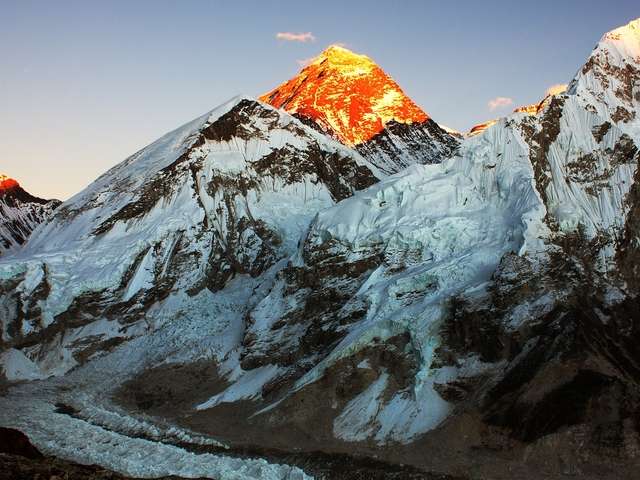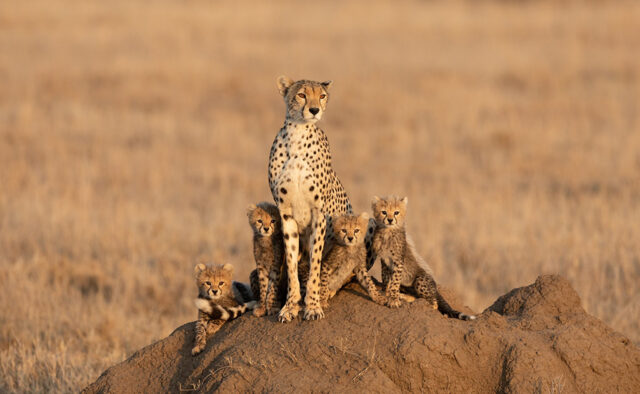
With an estimated 4 million wild animals roaming its plains, the wildlife viewing in Tanzania is legendary. Though there are several safari circuits within the country, the most popular by far is the Northern circuit. Made famous by the Great Migration, the Northern circuit encompasses quintessential safari parks including Serengeti National Park (NP), Ngorongoro Conservation Area, Tarangire NP, Lake Manyara NP, and Arusha NP. Kenya’s Amboseli NP is not typically part of the Northern Circuit but since it’s an easily accessible and magnificent park, it’s a must see. East Africa, and Tanzania in particular, is by every definition a wildlife lover’s paradise. The best way to experience it is by grabbing your binoculars, joining a jeep safari and cruising through the endless savanna.
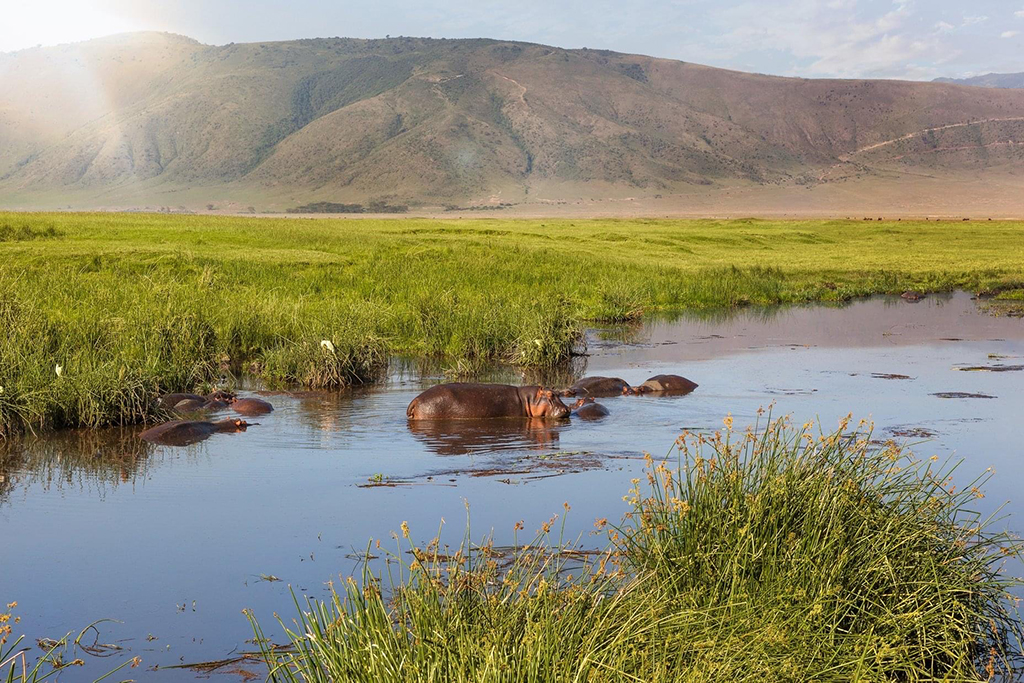
Serengeti National Park
“The place where the land runs on forever” or the Serengeti, is perhaps Africa’s most famous wildlife park. Revered for its incredible natural beauty, diversity and unbridled wilderness, its big carnivores draw hundreds of thousands of visitors each year. Witnessing the scale of the Great Migration, as 2 million zebra and wildebeest move through this boundless ecosystem, is a once in a lifetime journey that will change your vision of our planet and the environment. The abundance of wildlife makes for spectacular face to face encounters with all of Africa’s Big Five including the endangered black rhino. June through October is generally considered to be the best time to visit to avoid the rainy season and to witness the Great Migration’s intense Mara River crossings. Keep an eye out for the park’s signature umbrella trees, its numerous hippo pools and Africa’s big cats sprawled throughout the park when you embark on your dream safari in the Serengeti.
Tarangire National Park
Like the Serengeti, Tarangire is part of the world-famous migration of millions of ungulates searching for replenished pastures while drawing the predators that trail them. In fact, Tarangire is named for its large river that attracts plentiful thirsty wildlife during the dry season. Wildlife, from wild dogs, gazelles, lions and buffalo, all make their appearance here; particularly from July through to October. However, this resplendent park is primarily famous for its giraffes, birding, unique baobab trees and unrivaled elephant sightings. Ten times the size of nearby Manyara National Park, it’s magnitude makes it impossible to be explored in its entirety. It’s authentic, untouched Africa at its best. Although it is a little off the main safari route, make sure not to miss this gem on the Northern safari circuit.

Ngorongoro Conservation Area
Nearly 3 million years old, Ngorongoro Crater easily qualifies as one of the world’s greatest natural wonders. “Africa’s Eden” is the largest unflooded and unbroken caldera in the world. This immense crater, 300 sq kms in area, is a natural reserve home to some of the densest large mammal populations found anywhere in Africa. Once a massive volcano, it serves as Tanzania’s richest grazing lands supporting 30,000 wild animals. Leopards, cheetahs, zebras, elephants, and hyenas can all be found in this geological splendor. The Ngorongoro highlands also offer excellent birding, with over 500 species recorded. Topping it off, it’s a great place to see endangered rhinos and prides of lions. A timeless scene of African bliss that leaves you speechless, visiting Ngorongoro Crater should be at the top of any Tanzania bucket list.
Lake Manyara National Park
Without the name recognition of Tanzania’s big parks, Lake Manyara is a lesser known jewel that remains unsullied by large crowds of tourists. If you’re keen to find a tree climbing lion or see thousands of pink flamingos this may be the park for you. The lions are the park’s main attraction for their peculiar habit of sleeping the hot days away in the park’s acacia and fig trees. Lake Manyara’s baboons are another great part of the ecosystem, large in both individual and group size. If you’re lucky you may be able to find them in social troops of up to 200 members. The best time to visit is during the dry season is when the animals are drawn to the park’s few water sources and are easily sighted. However during the rainy season, Lake Manyara National Park is a phenomenal time for birding. You’ll be pleased to find that in addition to flamboyant flocks of flamingos, pelicans, egrets and herons also live around the lake. Other unique activities include taking a canoe safari to see the animals grazing on the shoreline up close, taking a night safari to witness prowling nocturnal predators, or doing a treetop walk to see life at the top of the forest canopies. Every adventure brings you to the same realization: Lake Manyara is a wonderfully diverse park to explore.

Lake Natron
Located in the Great Rift Valley, the views of the deep, red Lake Natron combined with the symmetrical volcano Ol Donyo Lengai behind it will transport you back in time. For those that are not adapted to the acidity it’s an incredibly deadly lake, with alkalinity on par with Argentina’s red Laguna Colorada. However, for adapted animals this hot, crimson pool is a refuge from predators. In this case, 2.5 millions lesser flamingos make this hostile mars-like environment their safe haven. Visit from September to December to see more than half of the world’s lesser flamingos hatching each year. If you did not time your Tanzania vacation to see the hatchlings, visiting the Lake Natron area is still a worthwhile excursion. Consider hiking Ngare Sero Gorge to stand under a refreshing freshwater waterfall or climbing to the crater of the Ol Donyo Lengai volcano. Lake Natron is a hauntingly beautiful environment and, when time allows, should be added onto any Serengeti safari.
See the Details: 4 Days Ascent Of Ol Donyo Lengai
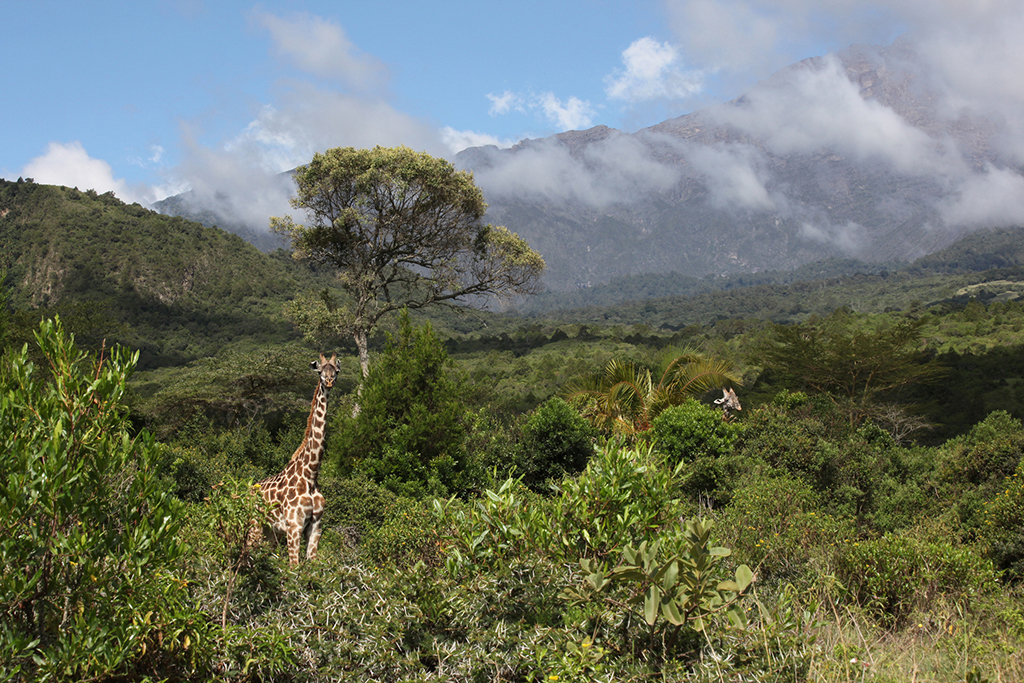
Arusha National Park
Although Arusha National Park is one of Tanzania’s smaller national parks it’s still home to the world’s largest population of giraffes. With few apex predators in this park, walking safaris through the grasslands to see the giraffes plus buffaloes, zebras, elephants, antelopes and warthogs, are quite popular. Alternatively it’s possible to make your way into the misty forests to see the Tululusia Waterfalls and the many tropical jungle species, from primates to amphibians. With sensational views of Mount Meru from every corner of the park, it would be a shame to overlook this verdant gem. The more intrepid might come to Arusha to climb Mt Meru, a 2-3 day trek. Others come to see the Ngurdoto Crater, a smaller scale version of Ngorongoro Crater where Buffalo can be found lounging in the swamps to keep cool. Other than Lake Manyara, it is the only park where wildlife viewing from a canoe is possible. Drift around the serene Momella Lakes to see beguiling views of hippos, flamingoes and bushbuck with the dormant crescent of Meru in the background.
See the Details: Mount Meru 3 Day Climb
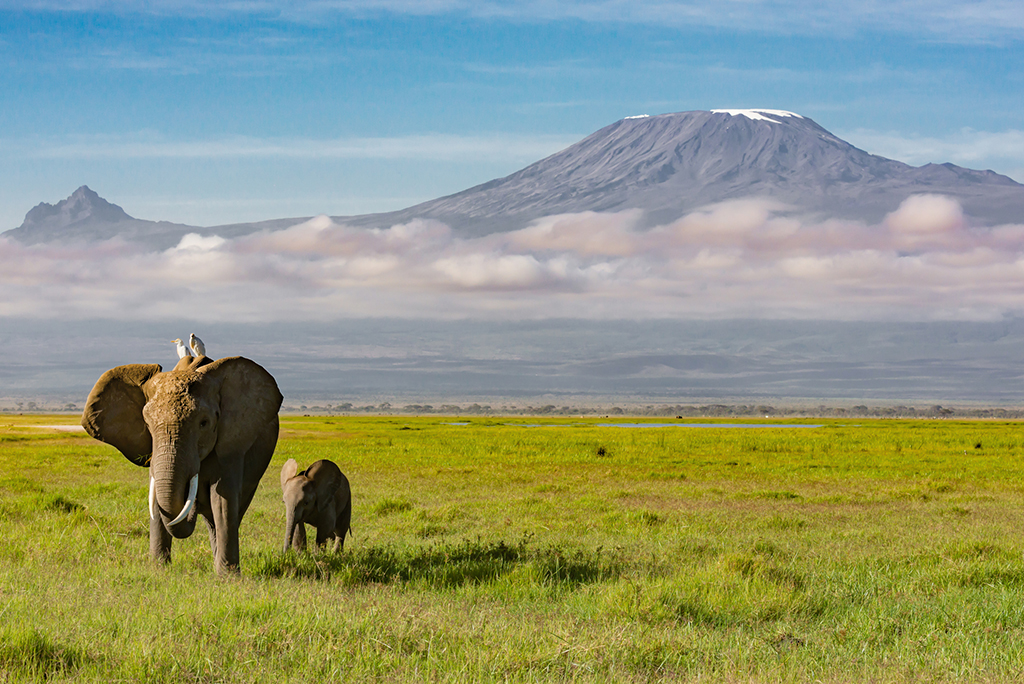
Amboseli National Park, Kenya
It may come as a surprise that one of the best places to view Kilimanjaro is not actually in Tanzania but Kenya’s neighboring Amboseli National Park. In addition to the iconic views of Kilimanjaro (rising a full 6 km above the floodplains), the basin is known for its large herds of African bush elephants. Its nickname “The Land of the Giants” says it all; Amboseli easily ranks as one of the top places in Africa to get close to the biggest land mammals on the planet. Over 1000 elephants leisurely stroll through the park, many displaying massive tusks. With towering Kilimanjaro as a backdrop, the park arguably offers the greatest photo opportunities in Africa. It is the most accessible of Kenya’s parks from Tanzania and can easily be added onto any itinerary.
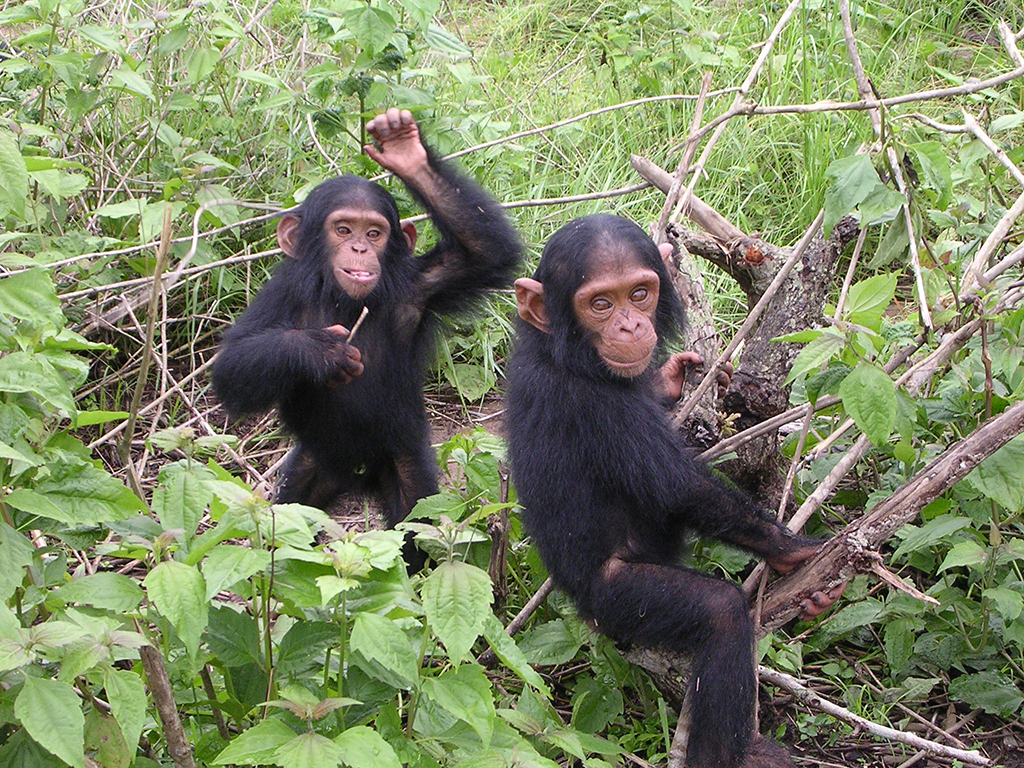
Gombe National Park
Less visited than the other parks on the Northern Circuit due to its remote location and small size, Gombe National Park is a wonder in its own right. Brought to fame by the trail blazing primatologist Jane Goodall, the park is home to over 100 individual chimpanzees within 3 major communities. Often hailed as the best place to see wild chimps, it’s a given that during the dry season you’ll be able to see the chimpanzees foraging on the lower slopes. Trekking through the dazzling green slopes and valleys, encountering wild butterflies and brilliant blue kingfishers is a treat in itself. However, as the trees around you fill with the hollers and barks of the chimpanzees you’ll know what drew you to this distant jungle. Meeting these wild primates, with which we share 98% of our genes, is an experience like no other. One that pulls you out of the modern and into the natural world, making you question what it means to be human. One that makes you strive to build a future with a greater respect for the planet that created you. In Gombe you will find a paradise of scenic lake beaches, surreal landscapes filled with hippos, snakes, and baboons. A whimsical landscape perfect for inspiring the next generation of conservationists.
View the Details on our Safaris: Tanzania Safaris
From the ‘Land of the Giants’ to ‘Africa’s Eden’ there’s endless possibilities for spotting Africa’s most extraordinary animals. If you have been inspired to visit Tanzania’s Northern Circuit then don’t hesitate to contact us. We would be delighted to use our expertise to aid in planning your trip to this world class safari, trekking and overall adventuring destination. As always, we hope you found our post helpful in organizing your trip. If you enjoyed it please do like, comment and subscribe to our mailing list for future posts!








